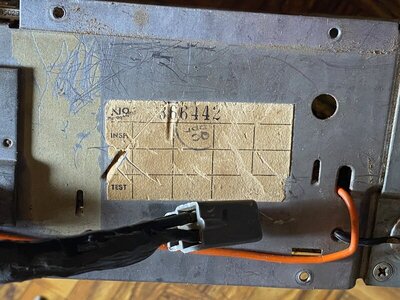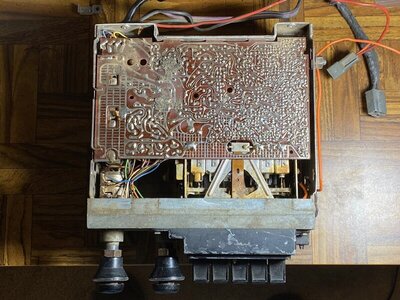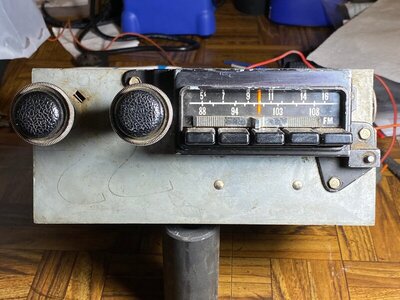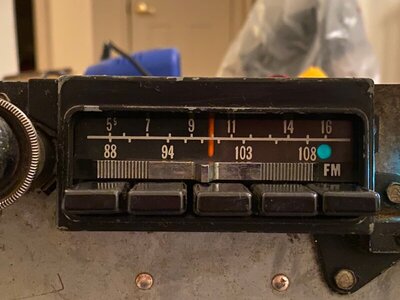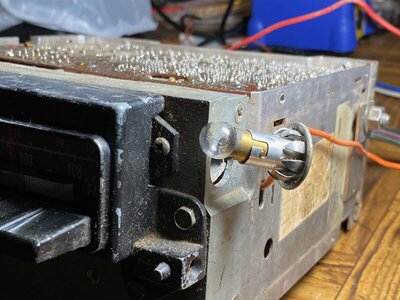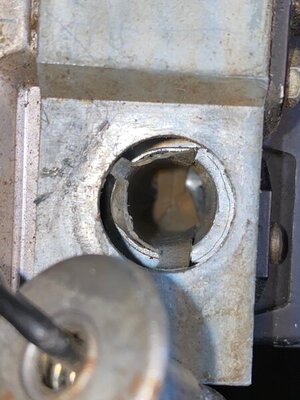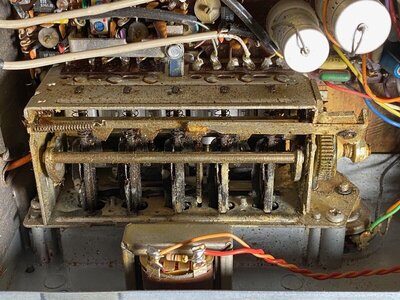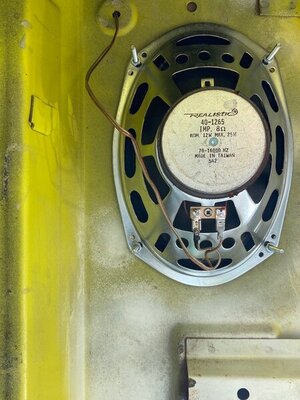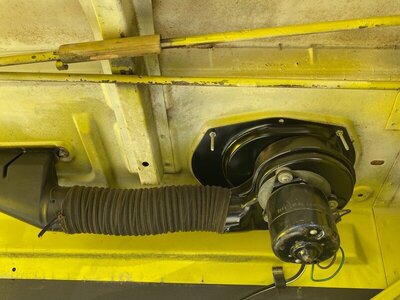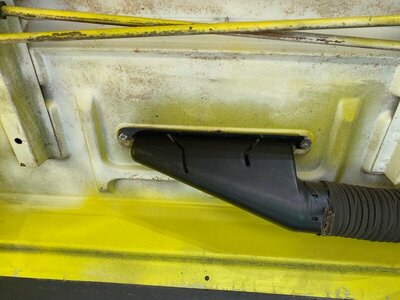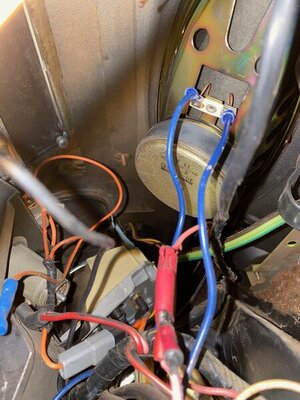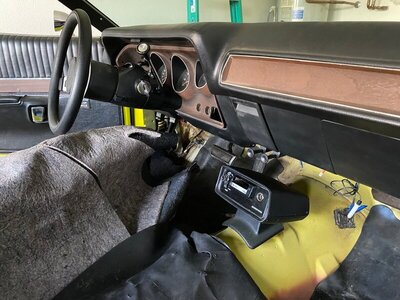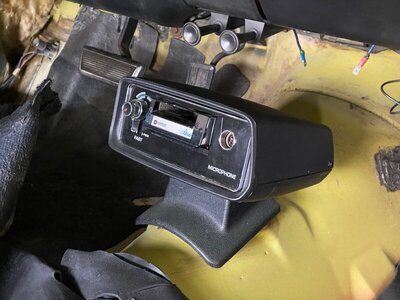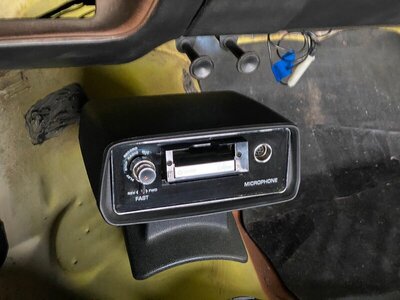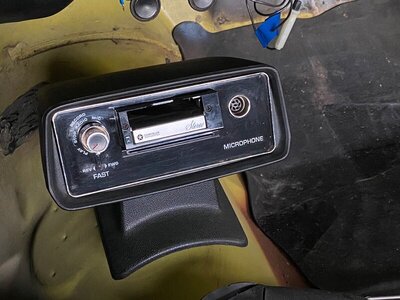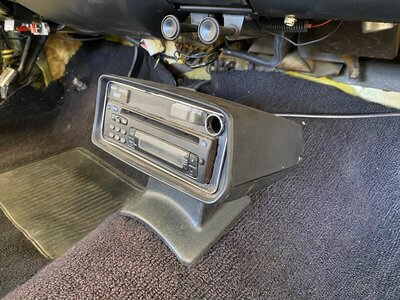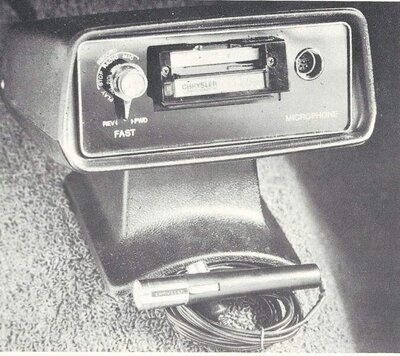MoparGuy68
Well-Known Member
My 71 Charger came with the R36 radio option. Tonight, I opened up the AM/FM Multiplex Stereo to see what it looks like inside, while it is out of the car.
So far, after reading my FSM, I have not been able to confirm whether the red power wire takes the full 12 volts from the battery, or not. I see what looks like five transformers inside the radio chassis, so perhaps it does take 12 volts as input.
I'd like to bench test this radio while it is out of the car because I don't know whether it works or not.. Probably take my car's battery, connect the red wire to the positive battery terminal and connect a wire from the negative battery terminal to the radio's chassis. Also trying to figure out how the blue, green and black speaker wires should be connected to two speakers. I don't know what speaker Ohm impedance should be used with this radio. I have a pair of 8 Ohm speakers that I could bench test with.
When it was in the car, only red power wire was connected to the harness. No other wires were connected. There are two speakers in the car, one in the middle of the dash, and one under the driver side of the package tray. Someone cut the orange wire from its harness connector. I cannot see exactly where it goes, but it must connect to a bulb to illuminate the dial indicator when the car lights are on. I cannot see this bulb.
I do see a bulb on the right side of the chassis, that only appears to illuminate the green circle that indicates successful tuning of an FM Stereo signal.
The preset push buttons are supposed to work as follows. Pull a button as far outward as it will go, tune to the desired station with the dial, then push the button as far in as it will go. After doing this the preset station should be set for that button. From years ago I remember this type of preset action, from the AM/FM Stereo radio in my father's 1971 Buick LeSabre. I have no idea how this actually works, to "remember" the tuned station and recall it when the button is pressed.
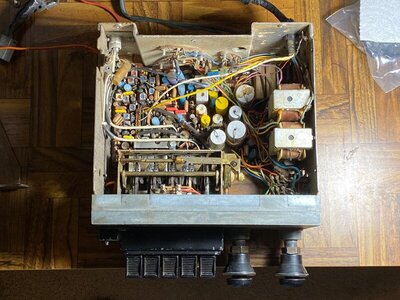
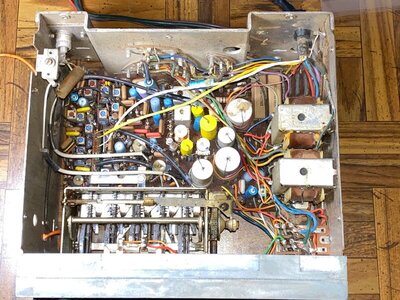
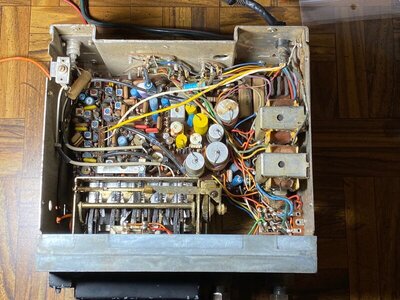
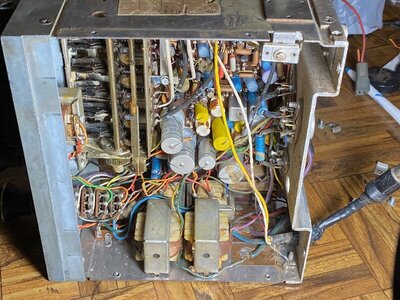
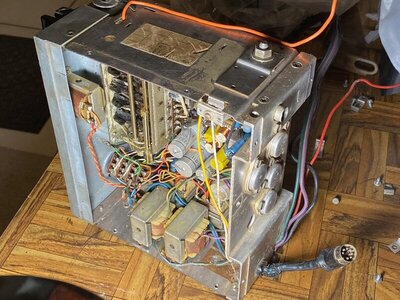
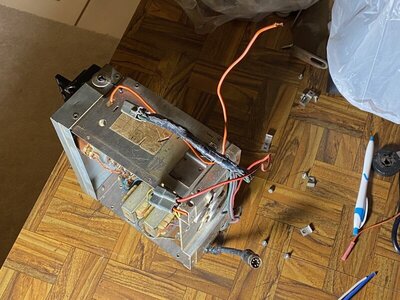
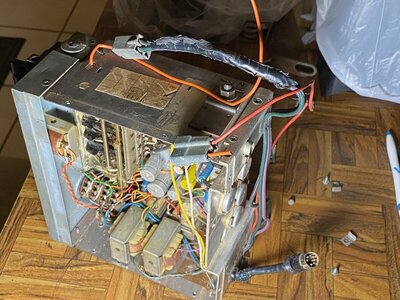
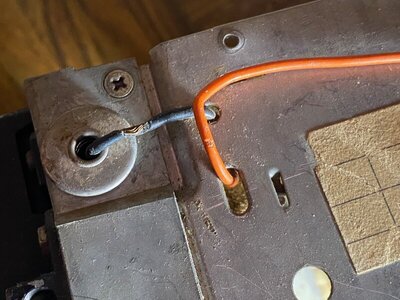
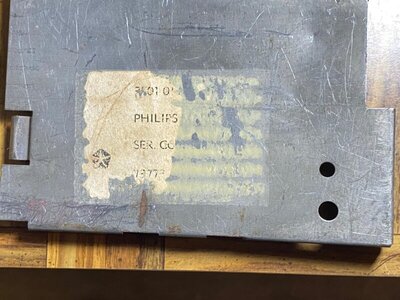
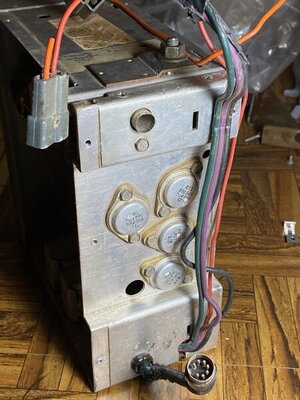
So far, after reading my FSM, I have not been able to confirm whether the red power wire takes the full 12 volts from the battery, or not. I see what looks like five transformers inside the radio chassis, so perhaps it does take 12 volts as input.
I'd like to bench test this radio while it is out of the car because I don't know whether it works or not.. Probably take my car's battery, connect the red wire to the positive battery terminal and connect a wire from the negative battery terminal to the radio's chassis. Also trying to figure out how the blue, green and black speaker wires should be connected to two speakers. I don't know what speaker Ohm impedance should be used with this radio. I have a pair of 8 Ohm speakers that I could bench test with.
When it was in the car, only red power wire was connected to the harness. No other wires were connected. There are two speakers in the car, one in the middle of the dash, and one under the driver side of the package tray. Someone cut the orange wire from its harness connector. I cannot see exactly where it goes, but it must connect to a bulb to illuminate the dial indicator when the car lights are on. I cannot see this bulb.
I do see a bulb on the right side of the chassis, that only appears to illuminate the green circle that indicates successful tuning of an FM Stereo signal.
The preset push buttons are supposed to work as follows. Pull a button as far outward as it will go, tune to the desired station with the dial, then push the button as far in as it will go. After doing this the preset station should be set for that button. From years ago I remember this type of preset action, from the AM/FM Stereo radio in my father's 1971 Buick LeSabre. I have no idea how this actually works, to "remember" the tuned station and recall it when the button is pressed.











